Asian Bittersweet, also known as Chinese Bittersweet or Oriental Bittersweet, is a woody vine scientifically named Celastrus orbiculatus. Belonging to the Celastraceae family, this species is native to the Russian Far East, China, Korea, and Central to Southern Japan.
Renowned for its aggressive growth, Oriental Bittersweet is considered an invasive species in many regions. It thrives as an opportunistic climber, scaling trees, shrubs, and structures with ease. The vine’s twisting growth habit often results in girdling, which can severely harm or even kill mature host trees. This characteristic makes it both fascinating and challenging to manage in gardens and landscapes.
| Common name | Asian Bittersweet, Chinese Bittersweet, Oriental Bittersweet |
| Botanical name | Celastrus orbiculatus |
| Family | Celastraceae |
| Species | orbiculatus |
| Origin | Russian Far East, China, Korea, Central & S. Japan |
| Life cycle | Woody |
| Plant type | Vine |
| Hardiness zone | 4, 5, 6, 7, 8 |
| Sunlight | Full Sun |
| Maintenance | High |
| Soil condition | Clay |
| Soil ph | Acid |
| Drainage | Moist but Well-Drained |
| Growth rate | Fast |
| Harvest time | Fall |
| Flowering period | Spring |
| Height | 3- 60 ft. |
| Flower color | Green |
| Leaf color | Green |
| Fruit color | Gold, Yellow |
| Fruit type | Capsule |
| Fruit benefit | Showy |
I. Appearance and Characteristics
Celastrus orbiculatus is a woody vine of the family Celastraceae. It is commonly called Oriental bittersweet, as well as Chinese bittersweet, Asian bittersweet, round-leaved bittersweet, and Asiatic bittersweet. It is native to China, where it is the most widely distributed Celastrus species, and to Japan and Korea.
It was introduced into North America in 1879, and is considered to be an invasive species in eastern North America. It closely resembles the native North American species, Celastrus scandens, with which it will readily hybridize.
The defining characteristic of the plant is its vines: they are thin, spindly, and have silver to reddish brown bark. They are generally between 1 and 4 cm (0.4 and 1.6 in) in diameter. However, if growth is not disturbed, vines can exceed 10 cm (3.9 in) and when cut, will show age rings that can exceed 20 years.
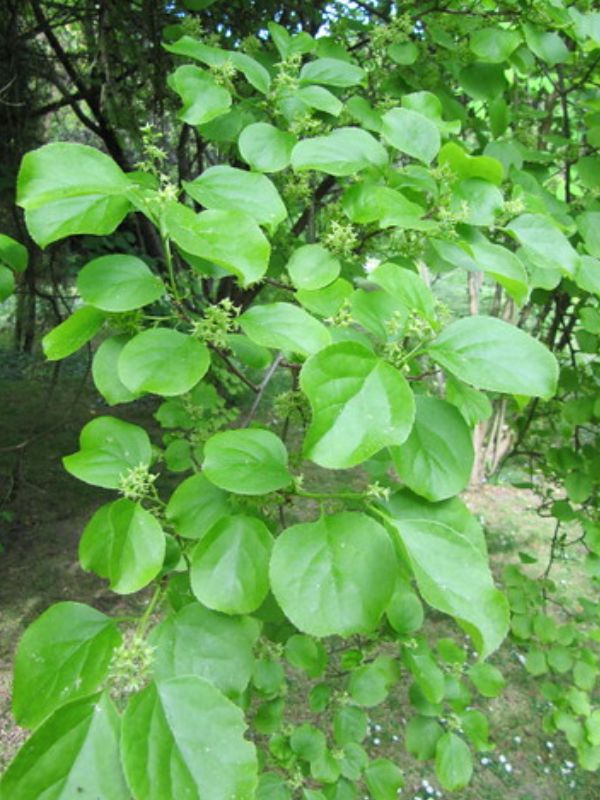
When Celastrus orbiculatus grows by itself, it forms thickets; when it is near a tree the vines twist themselves around the trunk as high as 40 feet. The encircling vines have been known to strangle the host tree to death or break branches from the excess weight, which is also true of the slower-growing American species, C. scandens. The leaves are round and glossy, 2–12 cm (0.8–4.7 in) long, have toothed margins and grow in alternate patterns along the vines.
Small green flowers are borne on axillary cymes. The fruit is a 3-valved capsule, which dehisces to reveal bright red arils that cover the seeds. All parts of the plant are poisonous.
II. How to Grow and Care
Sunlight
Oriental bittersweet thrives best in partial sun, receiving a blend of sunlight and shade throughout the day. This level of light fosters strong growth and optimal health. However, oriental bittersweet exhibits a high degree of light tolerance, capable of adapting to both full sun and full shade scenarios. In full sun, oriental bittersweet may grow more vigorously, while in full shade, growth is typically less robust.
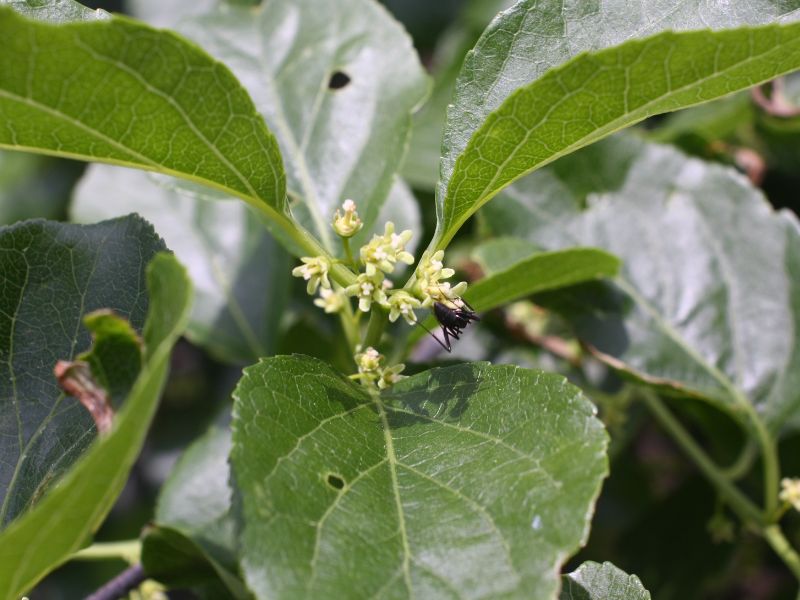
Oriental bittersweet’s adaptive traits allow it to regulate light absorption, ensuring survival across various habitats. Outdoors, oriental bittersweet should be planted in a location that provides dappled sunlight, although it can also withstand the extremes of full sunlight or heavy canopy shade.
Watering
Originating from East Asia, oriental bittersweet thrives in environments that mimic its native woodland habitat, where it experiences moderate humidity and consistent moisture. This species exhibits a preference for evenly moist soil conditions without being waterlogged. Watering should adhere to a routine of once every week to maintain its preferred moisture levels.
As an outdoor plant often used for ornamental purposes, oriental bittersweet demonstrates resilience against varying weather patterns but requires well-draining soil to prevent root rot during heavy rains.
Propagation
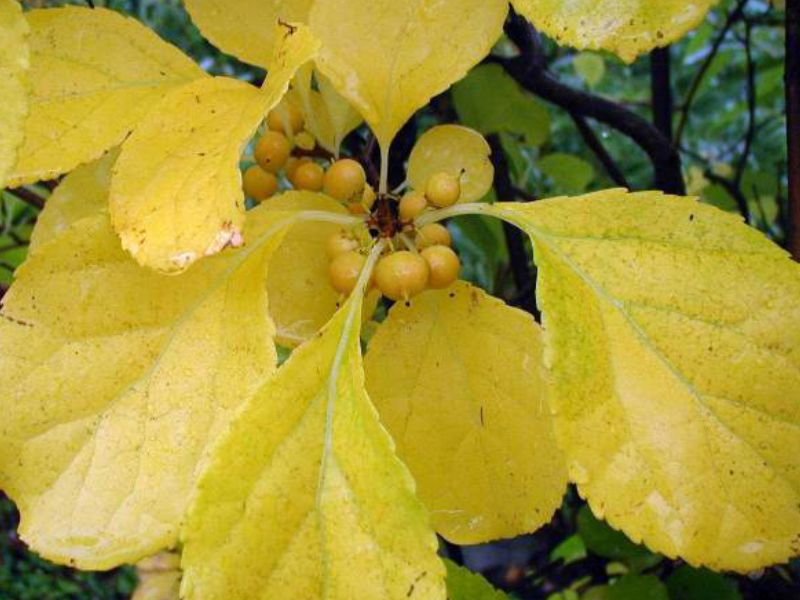
Oriental bittersweet can be propagated via softwood cuttings or layering during the ideal propagation season of spring and summer. It is relatively easy to propagate, and signs of successful propagation include root formation and new growth. When propagating via layering, utilizing a serpentine or compound method can improve success rates.
Transplanting
The best time to transplant oriental bittersweet is during late spring to mid-summer, ensuring optimum growth rates in warmer conditions. Choose a location with full sun or partial shade, and rich, well-draining soil. Remember to water oriental bittersweet thoroughly after transplanting to promote successful establishment.
III. Uses and Benefits
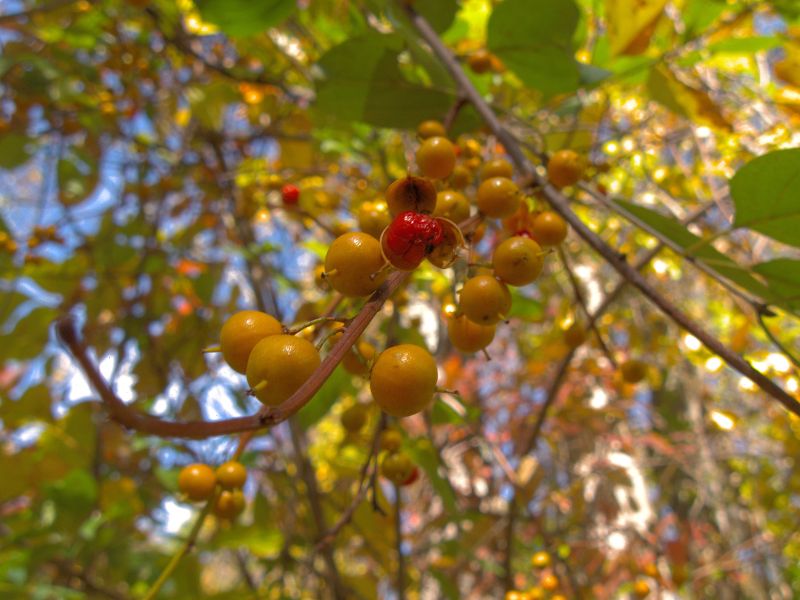
- Ornamental uses
Oriental bittersweet (Celastrus orbiculatus) is a climbing or creeping vine that is occasionally grown ornamentally for its attractive flowers and fruit. This vine makes a good addition to woodland and naturalized gardens and is useful for providing quick cover for fences, trellises, and rocks. It is best grown separately from other plant species due to its aggressive growth.
- Other uses
Despite the modest toxicity of its fruit, some livestock browse on the leaves without effect. Its vines, which are durable and tough, are a good source of weaving material for baskets. The fibrous inner bark can be used to make strong cordage.
IV. How to management
To minimize the effects of Oriental bittersweet’s invasion into North American habitats, its growth and dispersal must be tightly managed. Early detection is essential for successful conservation efforts. To reduce further growth and dispersal, above-ground vegetation is cut and any foliage is sprayed with triclopyr, a common herbicide. Glyphosate is another chemical method of control.
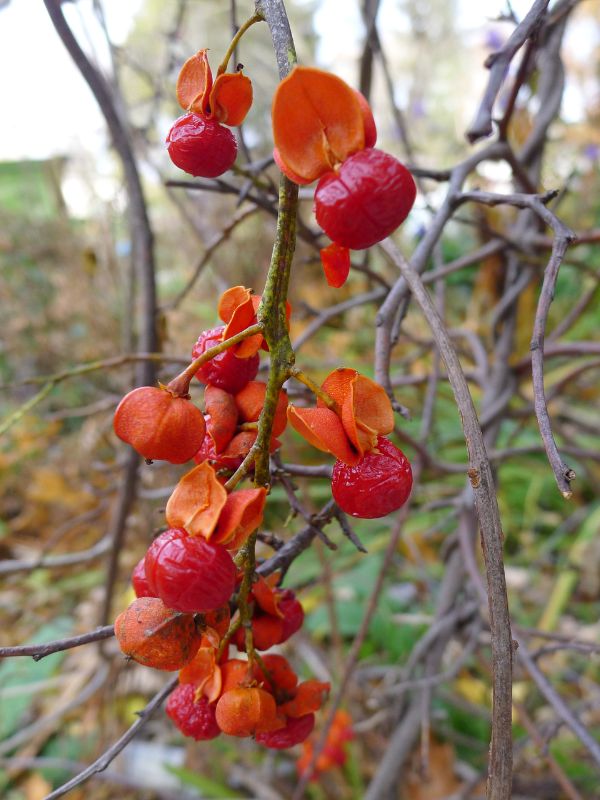
These two herbicides are usually sprayed directly on the plants in late fall to prevent other plants from being targeted. These steps must be repeated annually, or whenever regrowth is observed. Triclopyr is non-toxic to most animal and insect species and slightly toxic to some species of fish, but it has a half-life of less than a day in water, making it safe and effective for field use.
Mechanical methods have also been used, but they are not as effective due to the difficulty of completely removing the root. There is also no biological control agent available in helping control this species. Mechanical and chemical methods are being used, but they are only temporarily fixing the situation.
Find Where to Buy the Best Oriental Bittersweet (Celastrus orbiculatus)















Leave a Reply